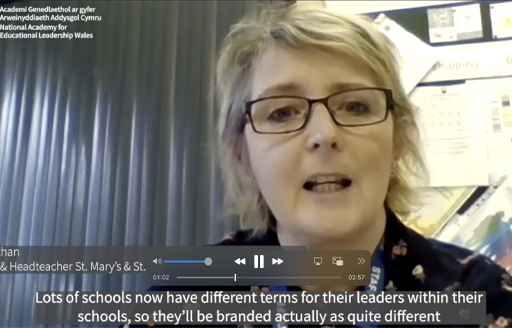1 Who are leaders?
This course is premised on the view that if we want to achieve an inclusive school we cannot rely upon bureaucratic processes or the school leadership team or others in the system to deliver it. Inclusive practice has to be situated in our day-to-day relationships and the trust we build amongst ourselves. In many ways we will only achieve inclusion despite our systems and what they throw at us. To achieve our inclusive goals we have to lead the change, accepting that we are part of ‘a society which organises itself without authority, is always in existence, like a seed beneath the snow’ (Ward, 1966). As Osiname (2018) recognised in their 5-school study, sharing leadership responsibilities helps schools become more inclusive and self-reflective. This is because of the exchange of information and ideas alongside a cross-community involvement in decision making. Their study supported the notion that leadership is a social process, one that is shared among all members of a group and not restricted to a particular person, position or role.
Activity 1: A model leader?
Explore two notions which are frequently mentioned when talking about how to encourage inclusionary change without simply relying upon top-down processes; in particular:
- distributed leadership
- middle leadership
Watch these two videos:

Transcript: Video 2: Middle Leadership – National Academy for Educational Leadership Wales
As you watch make notes about:
- The roles of people and context in these models.
- The relationship between these leadership approaches and top-down leadership goals.
- Ideas and language that suggest barriers or support for inclusion and suggest leadership emerging from a ‘seed beneath the snow?’
Discussion
Both of these videos are saying that the nature of the model varies according to the priorities of the senior leadership and overall context of the setting. They suggest an association between formal roles within the school and delivering the priorities of the institution. When thinking about ideas and language that might have a bearing on inclusion:
- In the distributed leadership film you might have noted several supportive terms: ‘leadership for all’, everybody having a key piece of work to lead, the mention of learning together and collective responsibility,
- In the middle leadership film the focus had the potential to be less inclusive: what leaders were willing to share, that middle leaders were important in their own right and could know what was happening in the class but that the school was a hierarchy and becoming a senior leader was about personal progress.
These comments, particularly those associated with distributed leadership, can be seen to link to notions of a flexible, collaborative community. However, both videos talked about people having this space because they played a key role or were leading a pre-determined area of work. What was far less evident was the idea that we are all leading in our day-to-day practice.
The videos recall the idea that leaders can neither fully lead nor can individuals be fully led (Hammersley-Fletcher & Strain, 2011). The ability to shape the circumstances in which we live, our agency, requires us to engage in collective activity. To be a ‘seed in the snow’, whatever leadership model is being adopted, your agency as a leader needs to overlap with the agency of others. Being a leader therefore requires taking a risk, requiring you to offer your leadership and for others to risk accepting it. Leadership in whatever form requires you to seek a point of agreement (probably unspoken) to serve as collective motivation.
An alternative model to describe the everyday leadership which is part of inclusive school practice is grassroots leadership. Davidson and Hughes (2021) suggest three characteristics of grassroot leaders. These leaders see conflict and injustice as a springboard for change and improvement; they recognise the need to earn and maintain trust to exert an influence; they understand that leadership does not arise from formal authority but can arise from any individual or group within any given context.
Read the following extract from Davidson, F. D., & Hughes, T. R. (2021) Grassroots Leadership Models: A Conceptual History of Thought and Practice [Tip: hold Ctrl and click a link to open it in a new tab. (Hide tip)] .
As you read, make notes about and consider:
- What ideas associated with grassroots leadership are also evident in other leadership models?
- In what ways do you think that practitioners can act as grassroot leaders within a school context?
Discussion
The following ideas that arise within a model of grassroots leadership are also associated with other models; particularly authentic leadership, servant leadership, transformational leadership, distributive leadership and moral leadership:
- the importance of civic responsibility and community engagement,
- building capacity in others,
- being attentive to the needs of others in ways that mean they follow,
- offering creative, hopeful, open responses that envision alternative social circumstances,
- recognising that there is wisdom within the collective and that authority needs to be shared,
- prioritising of issues of equity and social justice.
In considering the second question and how practitioners can act as grassroot leaders, we recalled a model developed from a wide body of literature by Ehrich & English (2012), which represents grassroot leader’s goals for change, their actions and strategies. This model positions these leaders as being consensual or conflictual, who aim for change that is reforming or refining (see Table 1).
| Approaches to change | |||
| Categories of change | Conflictual | Consensual | |
| Reforming | Tactics of confrontation Requires conflict to build group solidarity and provoke the enemy’s response and possible overreaction. |
Collaborative/democratic distributive Tries and constructs a common ‘win-win’ agenda with the opponent on a common vision. Generates reciprocal relationships. |
|
| Refining | Conflict Avoidance Selects one’s fights, avoids some but focuses on those deemed essential to maintain solidarity and which have a good chance of succeeding. |
Collaborative/democratic distributive Regards change as so small that it is not significant. |
|

